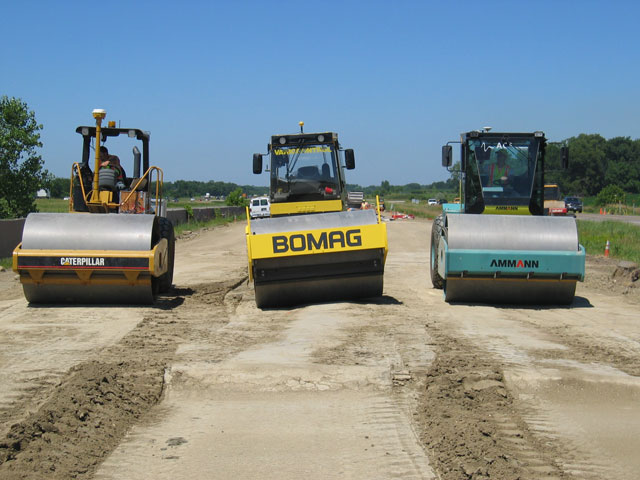Project Details
09-354
05/01/09
07/01/11
Caterpillar
Iowa Department of Transportation
Mannats Inc.
Mathy Construction
Sakai Heavy Industries Ltd.
Volvo Construction Equipment
Researchers
David White
Heath Gieselman
Pavana Vennapusa
Justin Harland
Stephen Quist
About the research
The Iowa Department of Transportation Roller-Integrated Compaction Monitoring (RICM) Research and Implementation project was initiated in summer 2009. The project was conducted in two phases:
Phase I: Three field demonstration projects were conducted in Iowa as part of the Phase I to evaluate three different RICM measurement technologies: (1) machine drive power (MDP) measurement technology on Caterpillar CP56 padfoot roller, (2) continuous compaction value (CCV) technology on Sakai SW880 dual vibratory smooth drum asphalt roller, and (3) compaction meter value (CMV) technology on Volvo SD116DX smooth drum vibratory roller. The main objectives of the Phase I include:
- evaluating the effectiveness of the RICM measurement values (IC-MVs) in assessing the compaction quality of cohesive subgrade materials, granular base/subbase materials, and HMA materials,
- developing project specific correlations between IC-MVs and various conventionally used in-situ point measurements in earthwork quality control (QC) and quality assurance (QA) practice and HMA construction,
- evaluating the advantages of using the RICM technology for production compaction operations,
- obtaining data to evaluate future RICM specifications, and
- developing content for future educational and training materials for Iowa DOT and contractor personnel for effective implementation of the technology in to earthwork and HMA construction practice.
Phase II: As part of the Phase II of this project, special provisions (SPs) were developed that required RICM technologies on three hot mix asphalt (HMA) overlay pilot projects in Iowa. The SP on US30 Harrison County project required RICM roller coverage including temperature, pass count, and compaction measurements on one break down roller. The SP on US20 Ida County project required RICM roller coverage including temperature and pass count on one break down roller. The SP on IA9 Kossuth County project required roller pass count coverage for all compaction equipment. In situ testing was conducted on each project by the Iowa State University research team beyond the requirements of the project specifications to analyze asphalt density, RICM values, and asphalt surface temperature changes with pass count and time. Correlations between RICM values and asphalt density/percent compaction and falling weight deflectometer modulus values are developed. Pass count information was analyzed using geostatistical analysis to evaluate spatial uniformity in pass coverage.
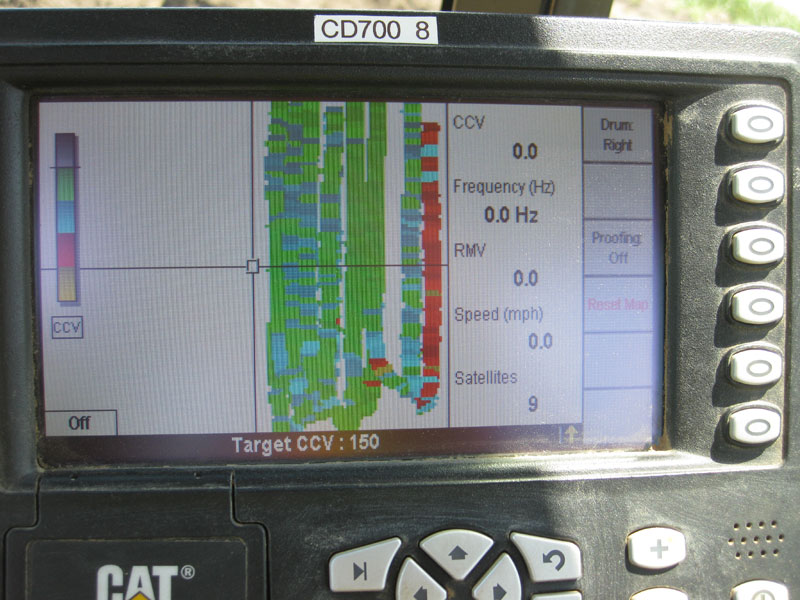




Project Details
Ammann Construction Equipment
Bomag Americas, Inc.
Case Construction Equipment
Dynapac
Federal Highway Administration Transportation Pooled Fund (TPF-5(128))
Sakai Heavy Industries Ltd.
State DOT Partners: IN, KS, MN, MS, ND, NY, TX
Transtec Group
Researchers
David White
Heath Gieselman
Pavana Vennapusa
About the research
A full description of the project is available on the Federal Highway Administration pooled fund study website.
CEER team members are involved in the project to provide expertise with compaction monitoring technologies, conduct in-situ testing on field project sites using the Geotechnical Mobile Lab and open houses on field project sites to disseminate project findings, and provide training to agency and industry participants.
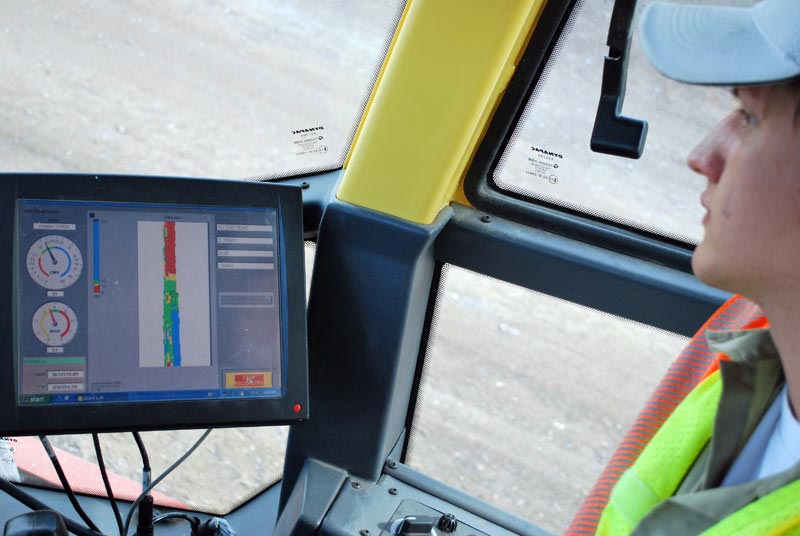

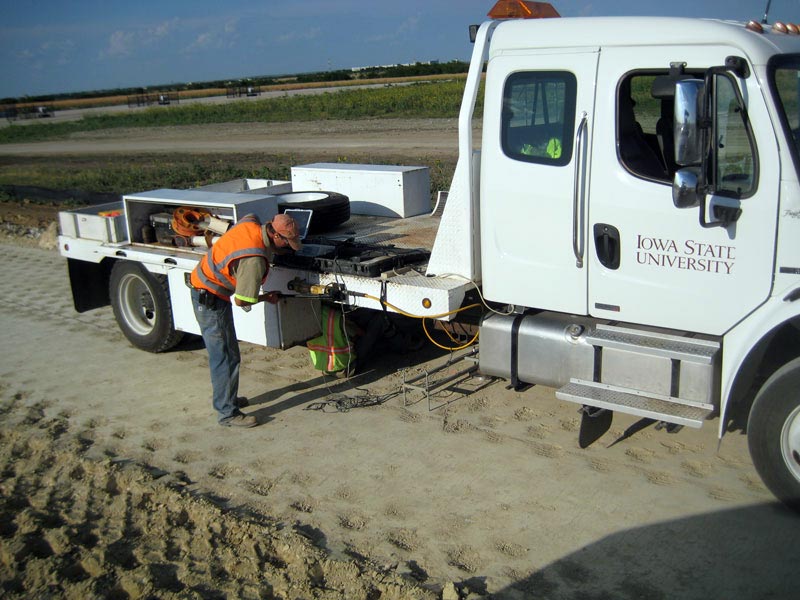
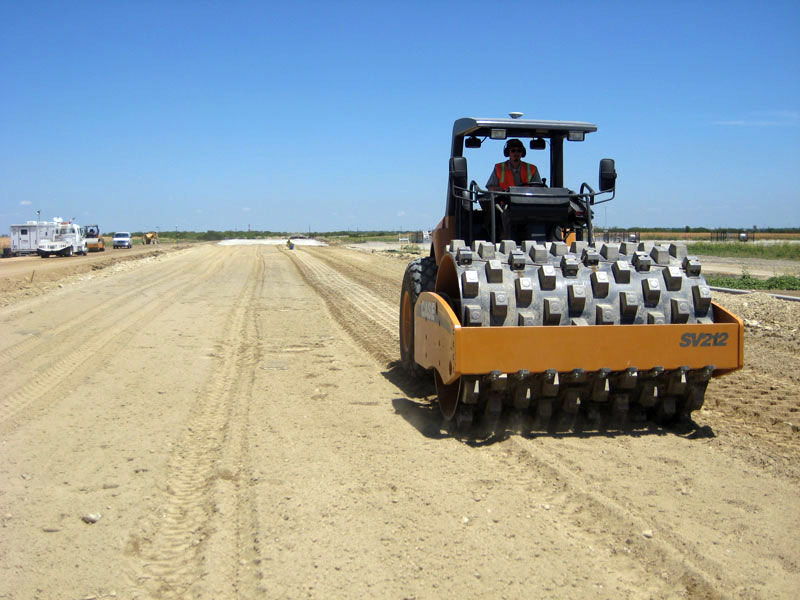
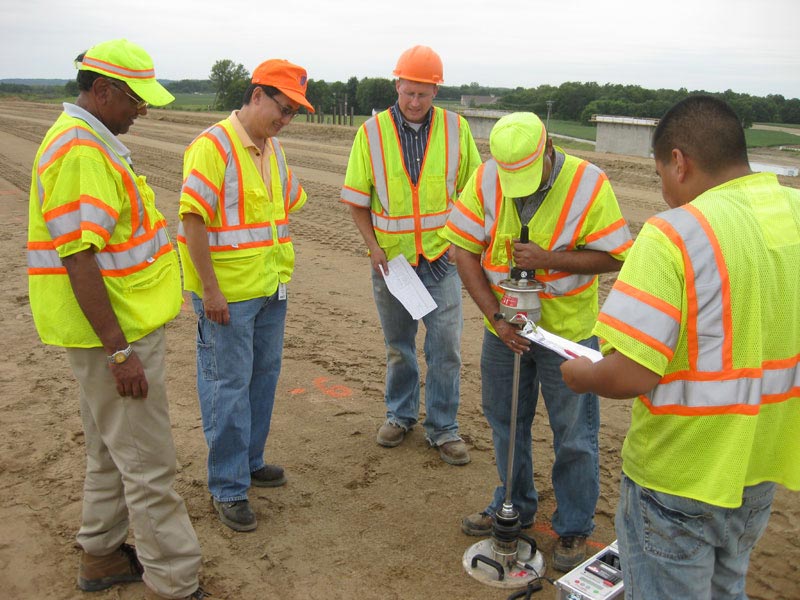
Project Details
07/01/06
10/31/10
Ammann Construction Equipment
Bomag Americas, Inc.
Case Construction Equipment
Caterpillar
Dynapac
National Cooperative Highway Research Program 21-09
Sakai Heavy Industries Ltd.
State DOT Partners: MN, NC, FL, MD, CO
Transportation Research Board
Trimble Navigation
Researchers
Michael Mooney
David White
Robert Rinehart
Normal Facas
Mark Thompson
Pavana Vennapusa
Odon Musimbi
About the research
The NCHRP Project 21-09, “Intelligent Soil Compaction Systems,” was undertaken to investigate intelligent soil compaction (IC) systems and to develop generic specifications for the application of IC in quality assurance (QA) of soil and aggregate base material compaction. The term intelligent soil compaction systems was defined to include (1) continuous assessment of mechanistic soil properties (e.g., stiffness, modulus) through roller vibration monitoring; (2) automatic feedback control of vibration amplitude and frequency; and (3) an integrated global positioning system to provide a complete geographic information system-based record of the earthwork site. An equally important term is roller-integrated continuous compaction control—defined by IC components (1) and (3).
Roller-integrated continuous compaction control (CCC) technology was initiated in Europe in the 1970s and has been used in European practice for nearly 20 years. The first European specification for roller integrated CCC was developed in Austria in 1990. Today, four European countries have soil compaction QA specifications using roller-integrated CCC (Austria, Germany, Sweden, and Switzerland) and U.S. states are beginning to implement pilot specifications (e.g., Minnesota). In European specifications the use of automatic feedback control IC rollers is permitted during compaction but not during QA because the roller measurement values (MVs) can be strongly influenced by varying amplitude and frequency. The dependence of roller MVs on frequency and amplitude in particular was verified in this study and further determined to be quite complex and difficult to predict. Accordingly, the recommended specifications developed here allow IC during compaction but do not permit the use of automatic feedback control IC during roller-based QA.
The following are the key items covered in this project:
- Recommended Specifications for Roller Integrated CCC in Earthwork QA
- Fundamentals of Roller Measurement Systems
- Relationship Between Roller-Measured Stiffness and In Situ Stress-Strain-Modulus Behavior
- Evaluation of Automatic Feedback Control-Based Intelligent Compaction
- Correlation of Roller Measurement Values to Spot-Test Measurements
- Case Study Implementations of Recommended Specifications
